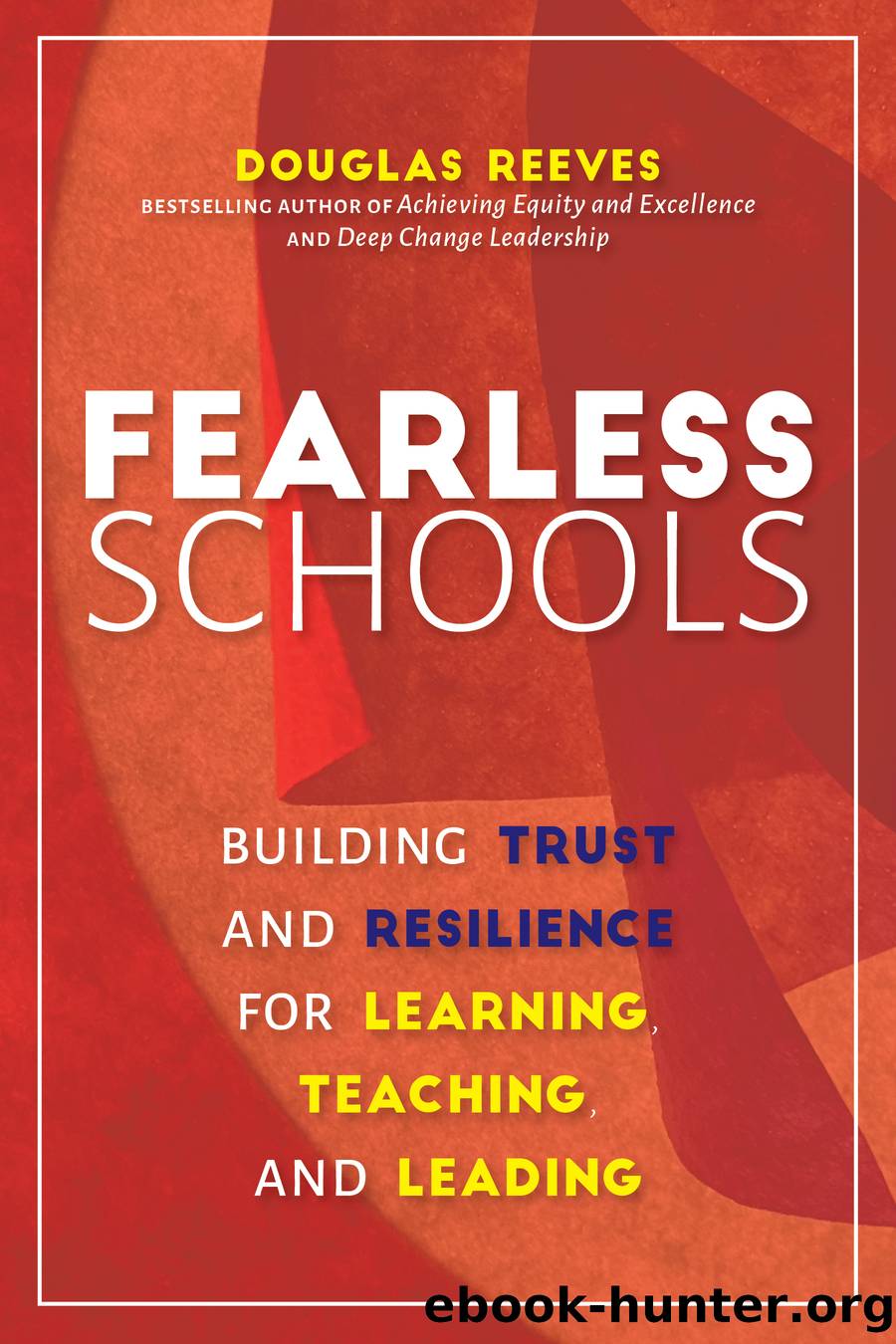Fearless Schools by Douglas Reeves

Author:Douglas Reeves
Language: eng
Format: epub
Publisher: Monkfish Book Publishing Company
Published: 2021-05-19T14:56:54+00:00
Chapter 7.
Organizational Resilience
In this chapterâ
⢠Anticipating Disruption
⢠Defining the Environment: The Unknown Unknowns
⢠Disciplined Decision-Making
⢠Discretion, Collaboration, and Centralization
David Denyer reviewed more than 180 academic articles and a set of international case studies on organizational resilience. He defines the term as follows: âOrganizational resilience is the ability of an organization to anticipate, prepare for, respond and adapt to incremental change and sudden disruptions in order to survive and prosperâ (Denyer, 2017, p. 3). Resilience is essential for organizations that face challenges, especially challenges that threaten the survival of the organization and people within it. In seeking to become more resilient, organizations take two strikingly different paths: defensive, stopping bad things from happening; and progressive, making good things happen. In the early stages of a crisis, organizations trend to be defensive: They stay inside during the threat of virus, focus on learning the fundamentals of reading and math for underperforming schools, police the streets in high-crime areas. These are all rational reactions to current threats. But when systems are stuck in this mode of defensive thinking, they rely on monitoring and compliance, tactics that eventually demoralize people within the organization and those they wish to serve. To break out of a compliance-dependent system, organizations must be sufficiently adaptive and flexible to innovate solutions that are lasting. The research on organizational thinking suggests that leaders engage in paradoxical thinkingâthat is, âbalancing preventative control, mindful action, performance optimization and adaptive innovation, and managing the tensions inherent in these distance perspectivesâ (Denyer, 2017, p. 8). In the context of educational systems, this requires that schools not only embrace technology but also maintain one-to-one relationships between students and teachers with and without new technologies. Lessons from the COVID-19 pandemic suggest that interpersonal contacts through old-fashioned telephones, sidewalk visits, and other personal connectionsâall at a safe distanceâare better than the illusion that mere placement of a computer in the hands of a child guarantees connection, engagement, and learning. In this chapter we will explore how resilient schools anticipate disruptions. This extends far beyond the traditional drills for fires and tornadoes and includes a wide range of scenario planning. Next, we will consider defining the environment with a candid acknowledgment of what we know and what remains unknown. While leadership decision-making is never perfect, it can be improved with discipline and an understanding that uncertainty and luck, as well as good strategy, influence every outcome. Finally, we will consider the types of decisions made in every educational system, from groups of teachers to large and complex systems. Some decisions are discretionary, some require collaboration, and others depend upon centralized authority. The tough part is deciding which decisions fit best with which level of decision-making, and then communicating that clearly throughout the organization
Download
This site does not store any files on its server. We only index and link to content provided by other sites. Please contact the content providers to delete copyright contents if any and email us, we'll remove relevant links or contents immediately.
Lean Lesson Planning: A practical approach to doing less and achieving more in the classroom (High Impact Teaching) by Mccrea Peps(1498)
Parent Talk by Chick Moorman(665)
The History of Work by Richard Donkin(652)
Fooled by Randomness: The Hidden Role of Chance in Life and in the Markets(609)
Cracking the Praxis Tests (Core Academic Skills + Subject Assessments + PLT Exams) by Princeton Review(545)
Big Questions in ELT by Scott Thornbury(543)
Engineering Graphics with AutoCAD 2020 by James D. Bethune(489)
Color Your Message: The Art of Digital Marketing and Social Media by Lisa Caprelli(445)
Contemporary Research in Adult and Lifelong Learning of Mathematics by Katherine Safford-Ramus & Jürgen Maaß & Evelyn Süss-Stepancik(434)
My Growth Mindset Journal by Annie Brock(434)
The Mediator's Toolkit by Gerry O'Sullivan(429)
ANIMAL ACTION by Unknown(418)
Electrical Power Simplified by Dr. Prashobh Karunakaran(412)
Becoming an Academic Writer: 50 Exercises for Paced, Productive, and Powerful Writing by Goodson Patricia(398)
Teaching Boys Who Struggle in School: Strategies That Turn Underachievers into Successful Learners by Cleveland Kathleen Palmer(390)
The Side Hustle by Nick Loper(382)
Mathematics Education in Singapore by Tin Lam Toh & Berinderjeet Kaur & Eng Guan Tay(377)
Educational Trauma by Lee-Anne Gray(375)
The Models of Engaged Learning and Teaching by John Willison(370)
